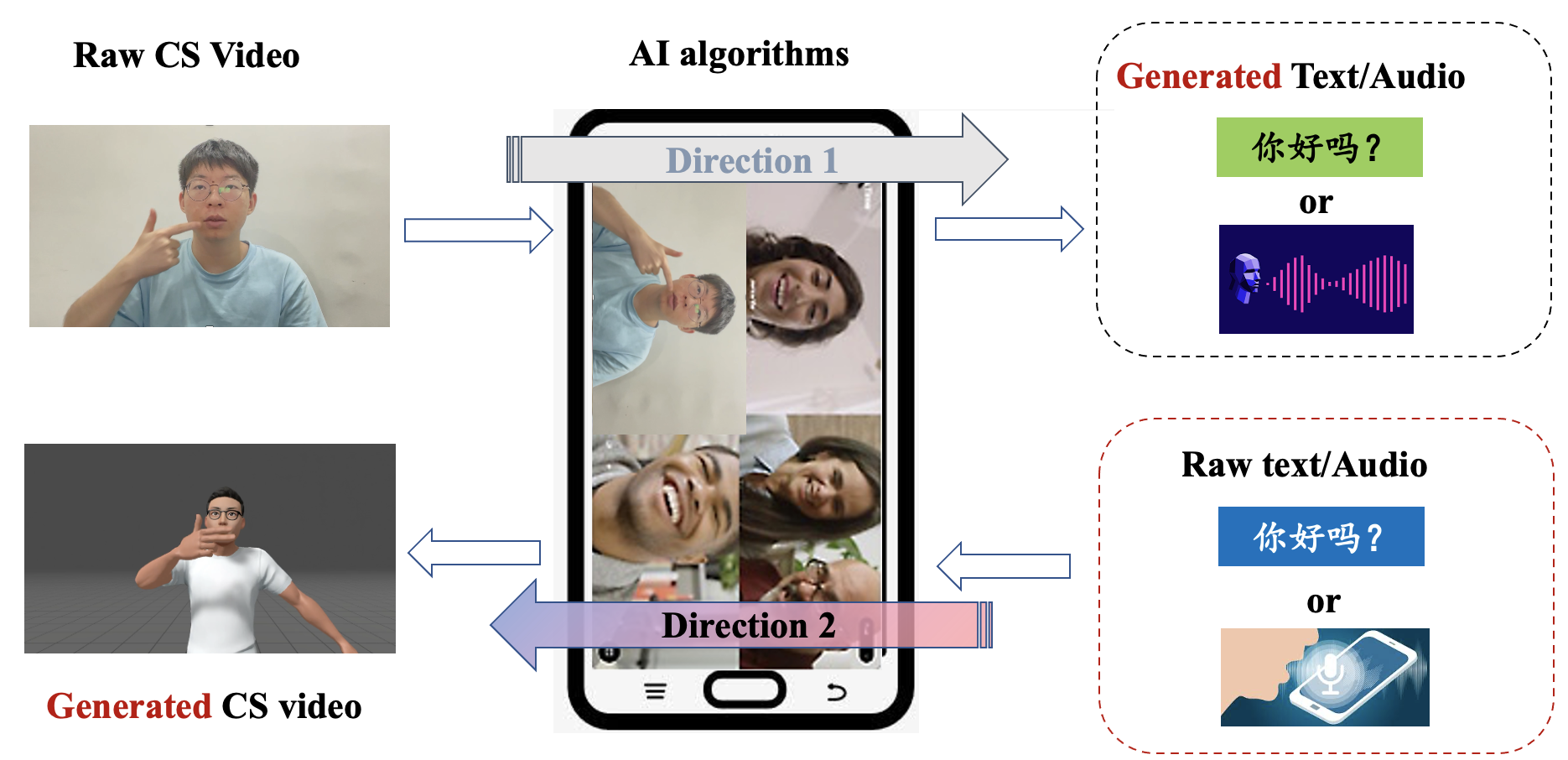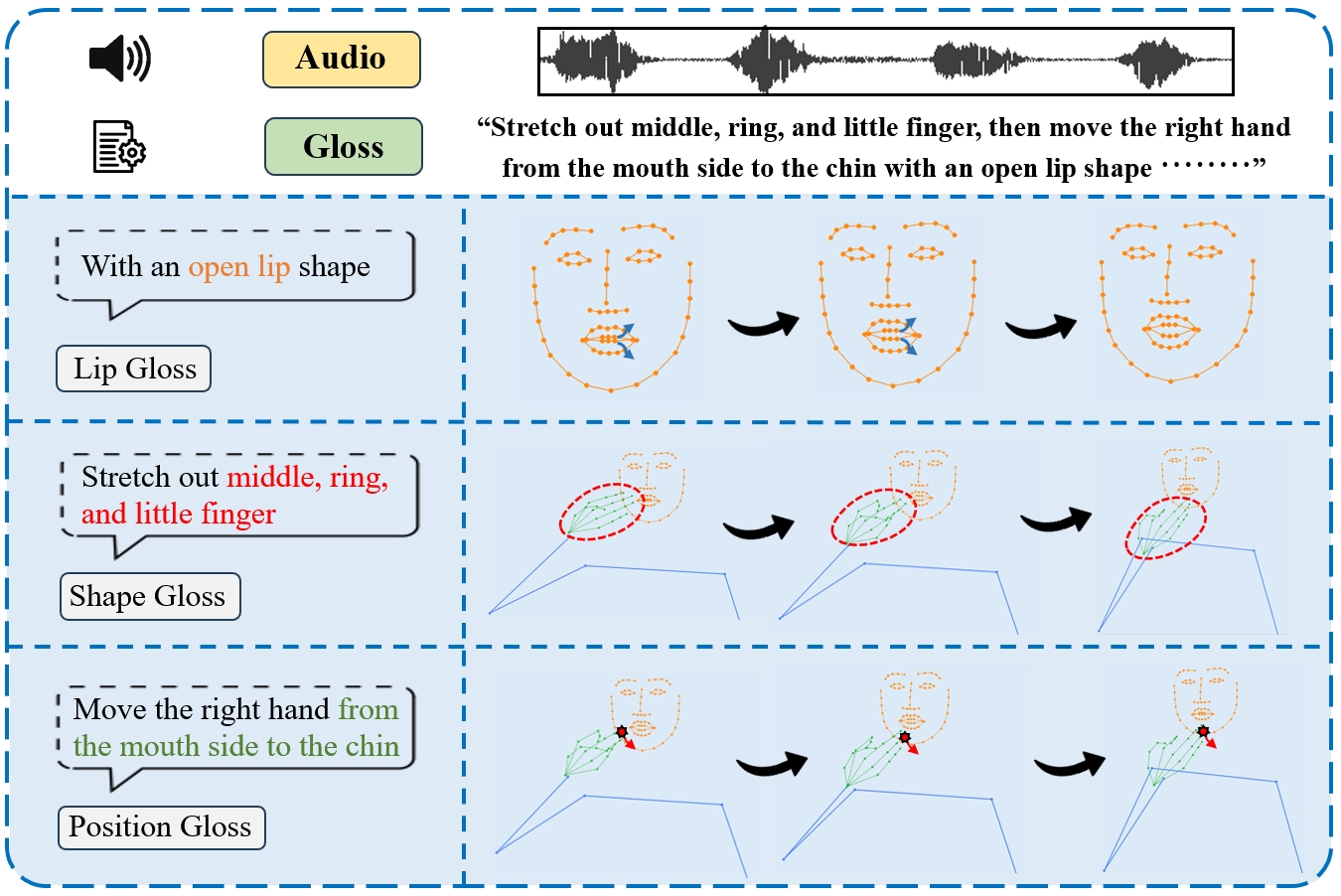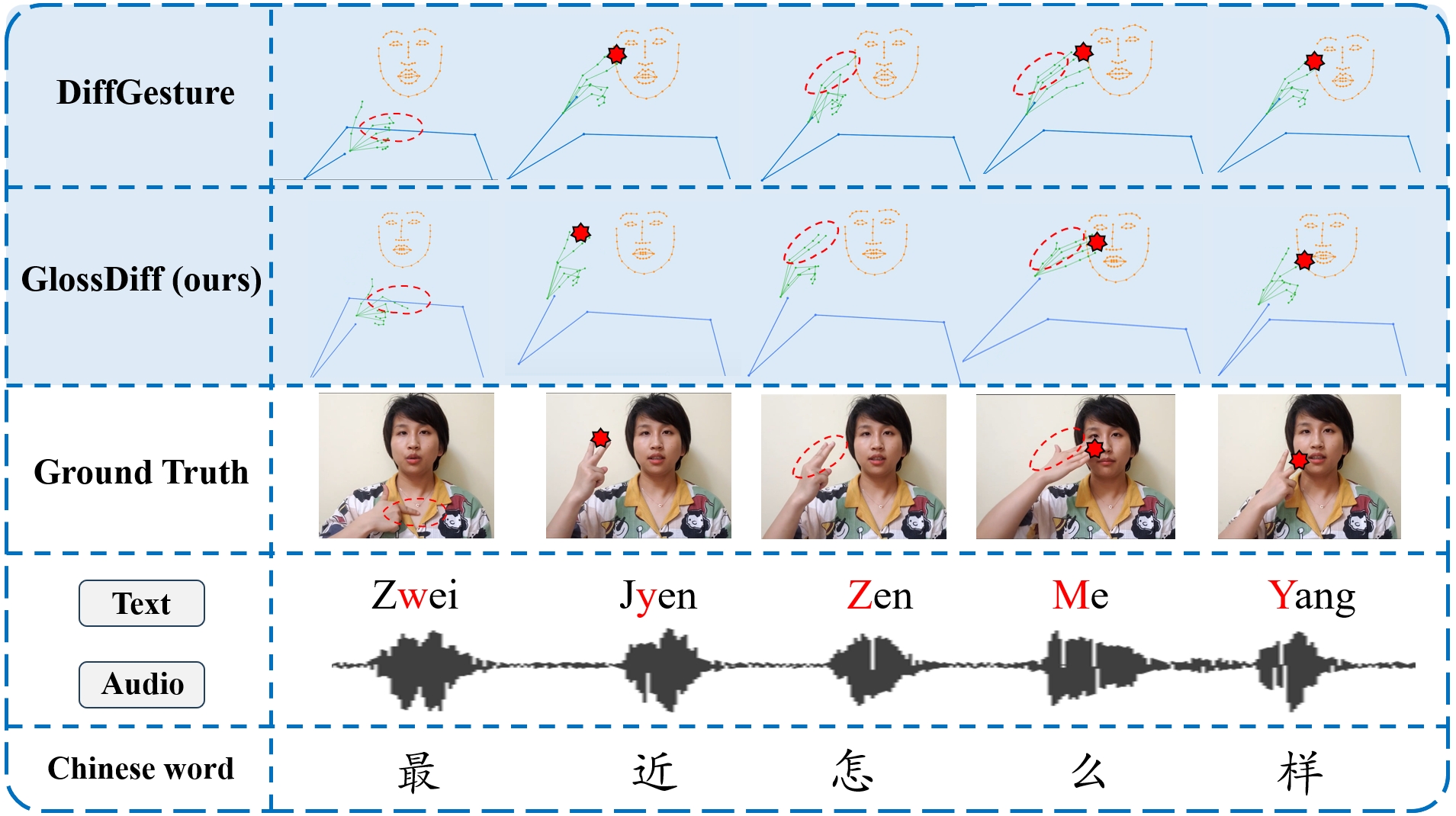
Cued Speech (CS) is an advanced visual phonetic encoding system that integrates lip reading with hand codings, enabling people with hearing impairments to communicate efficiently. CS video generation aims to produce specific lip and gesture movements of CS from audio or text inputs. The main challenge is that given limited CS data, we strive to simultaneously generate fine-grained hand and finger movements, as well as lip movements, meanwhile the two kinds of movements need to be asynchronously aligned. Existing CS generation methods are fragile and prone to poor performance due to template-based statistical models and careful hand-crafted pre-processing to fit the models. Therefore, we propose a novel Gloss-prompted Diffusion-based CS Gesture generation framework (called GlossDiff). Specifically, to integrate additional linguistic rules knowledge into the model. we first introduce a bridging instruction called Gloss, which is an automatically generated descriptive text to establish a direct and more delicate semantic connection between spoken language and CS gestures. Moreover, we first suggest rhythm is an important paralinguistic feature for CS to improve the communication efficacy. Therefore, we propose a novel Audio-driven Rhythmic Module (ARM) to learn rhythm that matches audio speech. Moreover, in this work, we design, record, and publish the first Chinese CS dataset with four CS cuers. Extensive experiments demonstrate that our method quantitatively and qualitatively outperforms current state-of-the-art (SOTA) methods.




The source code and data will be open source, the newset update will be published in this page